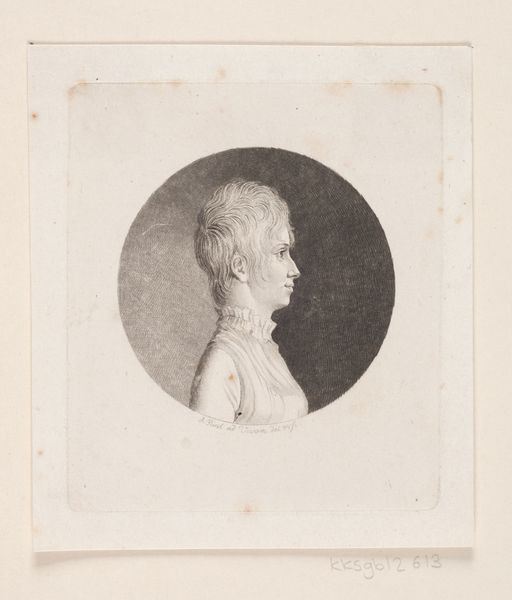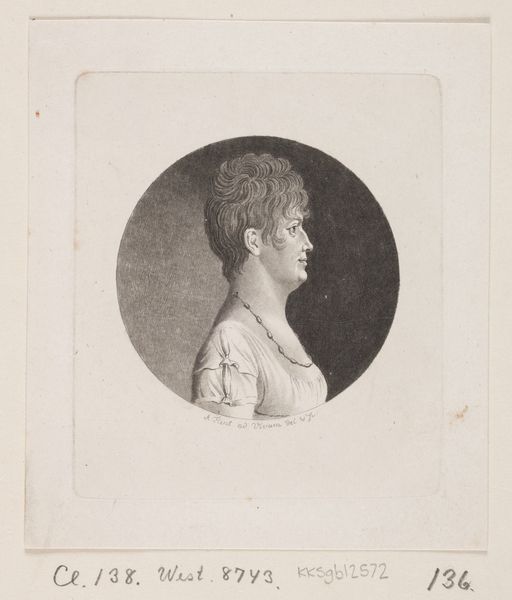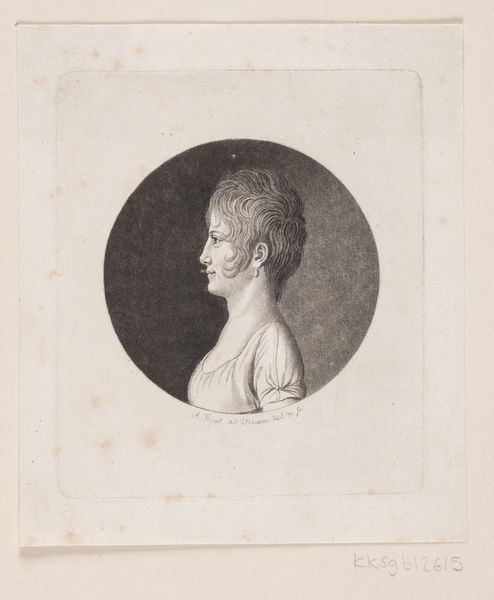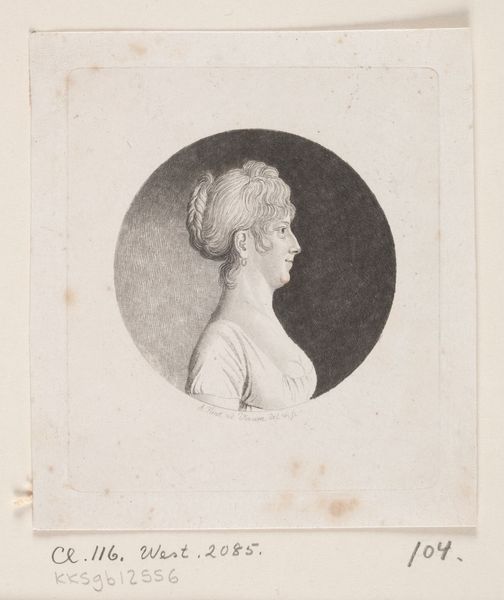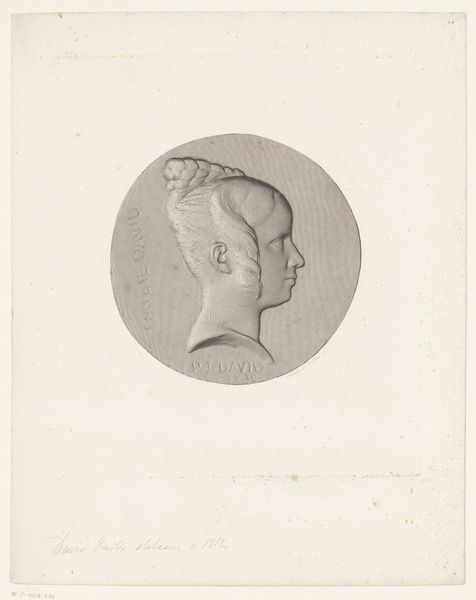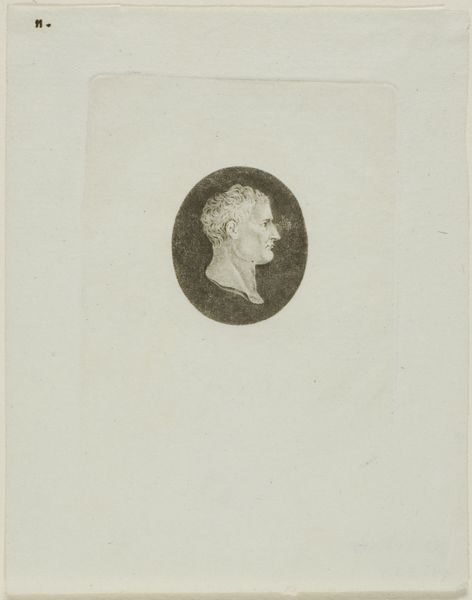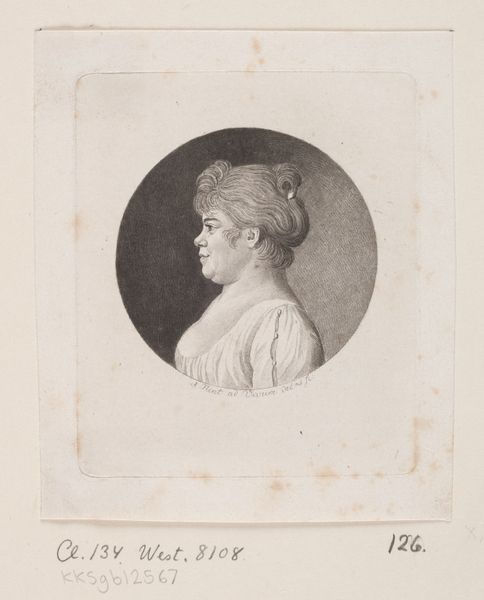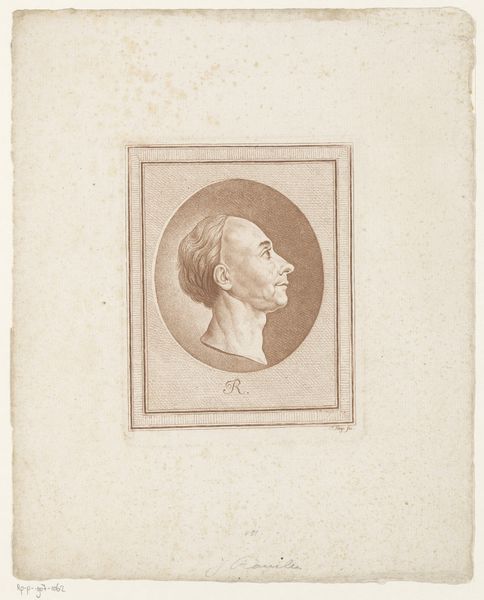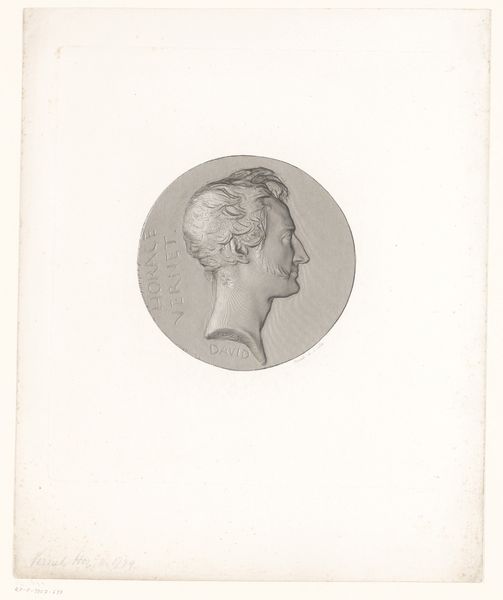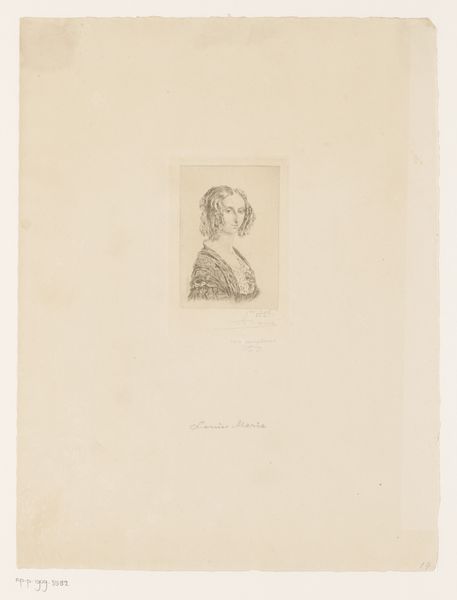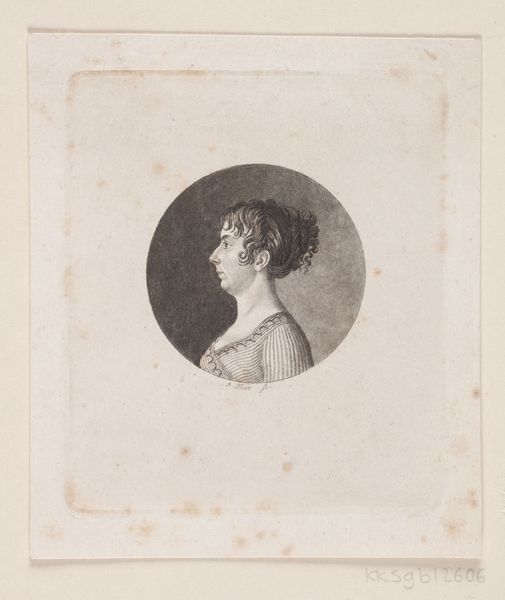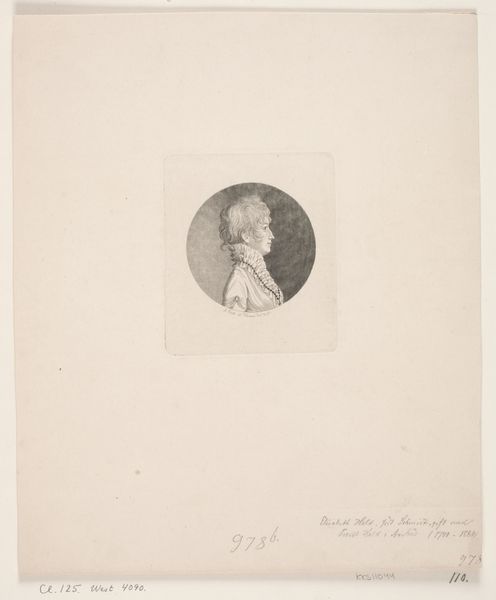
drawing, print, engraving
#
portrait
#
drawing
# print
#
men
#
line
#
engraving
#
profile
#
realism
Dimensions: plate: 11 1/16 x 8 1/8 in. (28.1 x 20.6 cm)
Copyright: Public Domain
Curator: This is Asher Brown Durand's 1833 engraving, "George Jones," currently housed at the Metropolitan Museum of Art. Durand, primarily known for his landscapes, also did notable work in portraiture and engraving. Editor: You know, even with the formal technique, the line work is so crisp and clean it gives off this strangely modern, almost minimalist vibe. Like a well-designed logo, if logos included curly hair. Curator: It’s intriguing how the rigidness of the neoclassical profile softens through Durand's detailed rendering of the hair and fabric. Profile portraits like this one were really popular at the time and can tell us a lot about societal power dynamics and constructions of masculinity in the 19th century. Who was seen as important enough to memorialize and why? Editor: Right! The composition has this bust set in what appears to be a pseudo coin or a medal design? Very calculated move to instantly establish not just who this person is but his cultural, maybe even his monetary worth. He kind of stares off in the distance, daydreaming like the world revolves around him. Curator: Given that it’s an engraving, we can infer a potential distribution for a wider audience, emphasizing the sitter’s importance within the social sphere. Let’s consider George Jones himself: he would have been an important figure to warrant such an effort, fitting into the period's power structures. The realism in the line work suggests a deliberate attempt to accurately portray this man, elevating his status. Editor: And in that, is a touch of something, maybe irony isn't quite right... There’s this attempt at immortality but also something incredibly delicate. The light shading and soft outlines make it feel quite fleeting, even ephemeral, almost a memory taking physical shape. I wonder if Durand felt some kinship with Jones. Curator: It makes one ponder on the role of art in image making. Perhaps the fragility you mention invites a more intersectional reading—acknowledging not only Jones's social position but also the precarious nature of all forms of power and recognition, then and now. Editor: Looking at this piece, one finds it invites pondering about memory, legacy, and our very own fragile existence, made all the more pertinent when observing his stoic pose. Curator: Indeed, engaging with "George Jones" underscores the complex relationship between artist, sitter, and societal narratives, reminding us that portraits are never just likenesses; they are potent cultural texts.
Comments
No comments
Be the first to comment and join the conversation on the ultimate creative platform.
